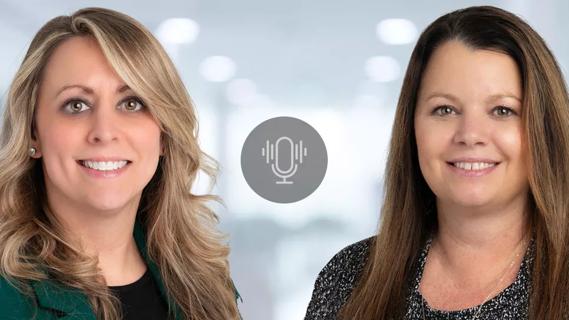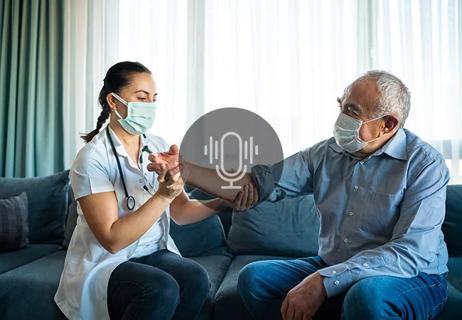Cleveland Clinic clinicians partner with these technical experts to design digitals tools that provide interactive, personalized care at the patient’s convenience

Digital tools remind Beata Earl of a Swiss Army knife.
Advertisement
Cleveland Clinic is a non-profit academic medical center. Advertising on our site helps support our mission. We do not endorse non-Cleveland Clinic products or services. Policy
“A Swiss Army knife is a versatile tool that helps get the job done,” says Earl, a Cleveland Clinic systems analyst. “That same versatility applies to technology when it’s thoughtfully designed.”
Earl was part of the team that worked with Epic to create and launch the Cleveland Clinic COVID home monitoring tool in March 2020. That tool’s demonstrated success uncovered the potential to further personalize care at home.
“Our focus is on connecting patients with tools that are designed to support their individual care journey,” Earl explains, “These digital solutions align with the existing clinical workflow to strengthen the continuity of care.”
Building a technical solution takes shape during the discovery phase.
“When a clinical team submits a request, there’s a lengthy discovery process to clearly define their needs in order to determine which tools yield the best outcome,” says Tania Grant, RN, a Cleveland Clinic systems analyst.
“We consider the different pathways to facilitate communication between the patient and their care team. This could be reminders to complete certain tasks or notifying providers when there are abnormal values,” adds Damian Sher, RN, also a systems analyst at Cleveland Clinic.
The trio collaborates with clinical teams to identify potential gaps that would benefit from Epic’s Care Companion module, an interactive, mobile health tool that helps patients follow their personalized care plan. Their unique partnership with the clinical team guides the design of a customized tool that augments care.
Advertisement
Grant emphasizes this imperative: “These initial discussions are fundamental to develop a meaningful tool that doesn’t create extra clinical work. We evaluate various tools to determine how best to deliver the content through MyChart, our electronic patient portal.”
Then Earl and Sher get to work.
“Their technical builds are exceptionally creative.” Grant continues, “There’s a mindful balance between clinical input and patient-facing content. Ongoing discussions with our clinical partners ensures we are on target.”
One example of this type of collaboration is the Care Companion tool that the trio helped Cleveland Clinic’s Women’s Health Institute develop for pregnancy care.
Knowing the depth and varying information available on the internet, Cleveland Clinic Women’s Health Institute providers streamline these details into their Healthy Pregnancy Guide, given to patients at their first prenatal visit.
“The clinical team was searching for a digital option to share applicable content with the patient that is relevant to her gestational status.” Earl continues, “Just-in-time education is more meaningful when it coincides with your personal experience.”
“Timing targeted content delivery was possible with our integrated systems,” says Sher. “We combined backend programming and rules to initially identify which patients should receive a congratulatory message with introductory material.”
Following the initial prenatal visit, the physician enrolls the patient into the program to receive ongoing interactive and personalized obstetrical education at designated intervals throughout her pregnancy via the MyChart Mobile App.
Advertisement
Sher explains, “Each patient’s experience is unique, and we have a heightened sensitivity for varying possibilities, including pregnancy loss. We run nightly reports to ensure patient data aligns with the timed messaging.”
With a pregnancy loss, the program is designed to send a condolence message with the option to receive additional resources. The clinical team receives a notification so they can provide the appropriate outreach and comfort.
There are more than 14,000 enrolled patients since launching the program in March 2022, which will soon be offered to Cleveland Clinic Florida patients.
With the team’s expertise, they expand technology’s existing functionality to design creative programming for distinct workflows.
“With our integrated systems, we have access to current patient data that ensures the appropriate interactions,” says Sher. “By combining various tools on the backend, we can create specific workflows that direct patients to enter data, receive data, review education and complete tasks. All these details are captured and easily accessible in the patient’s electronic medical record
“There’s tremendous value in designing personalized tools that are engaging and easy for our patients,” says Earl. “Our integrated systems make this possible.”
Grant continues, “Boosting patient care is rewarding and motivating. We’re fortunate to have engaged clinical partners who welcome creativity and unique approaches to solving clinical needs.”
Additional MyChart Care Companion mobile health programs include cardiothoracic surgical outcomes, chronic disease management, concussion, liver transplantation, pediatric cardiology and pediatric asthma.
Advertisement
Advertisement

Experts raise concerns, make recommendations about improving the data

Decongestion, therapy titration and readmission rates comparable to those with traditional hospital care

Researchers use AI tools to compare clinical events with continuous patient monitoring

Virtual model enables around-the-clock management of common acute conditions

Nurses play pivotal role in patients’ ability to recover in the comfort of their own homes

While logistical questions remain about RPM, its benefits for both patients and caregivers are abundantly clear

Home weight monitoring in healthy newborn infants is feasible

Aim is to match outcomes of inpatient rehab at greater convenience and lower cost